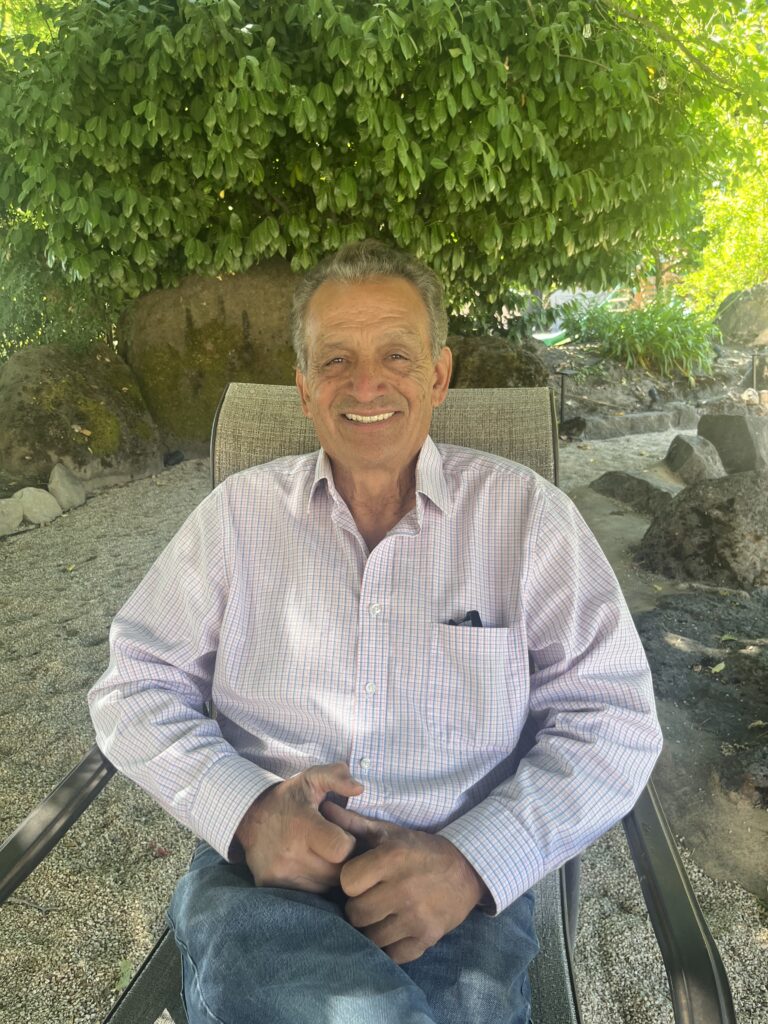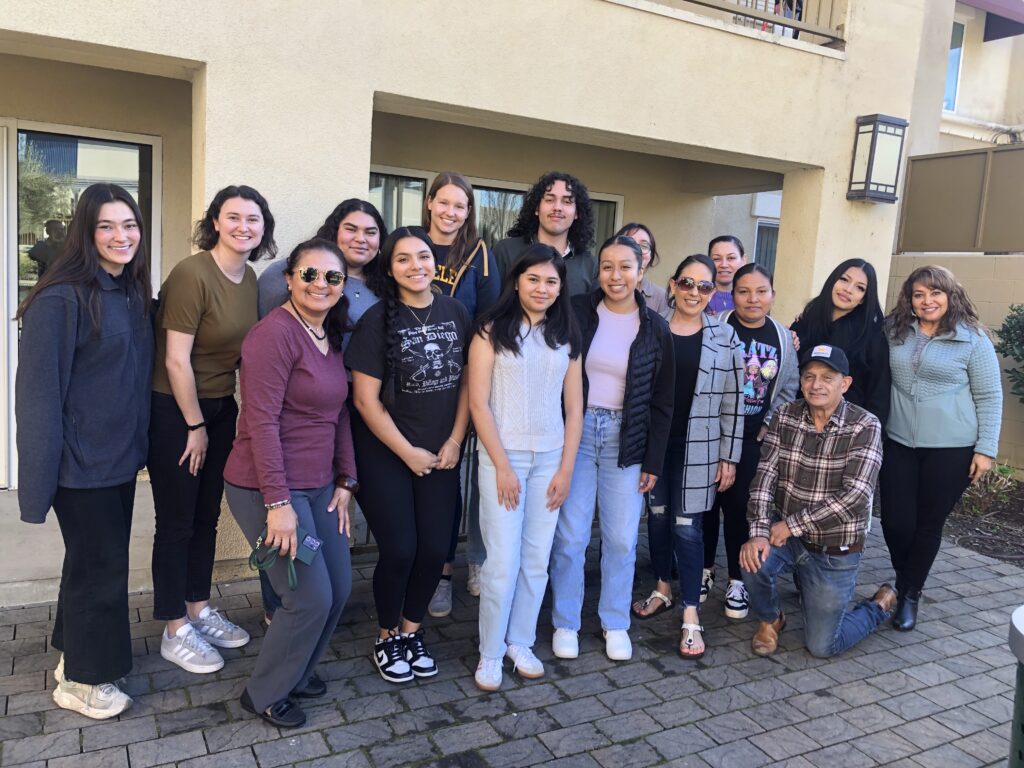Sonoma County is known for its rolling fields and famed vineyards, making the region a pillar in California's wine industry. But a sweeping new survey from UC Berkeley has found that approximately 75% of agricultural workers there have worked during wildfires since 2017, raising questions about worker safety and a program that could further expose workers during wildfire evacuations.
About half of the 1,000-plus farmworkers who participated in the study reported having ailments like headaches or sore throats after working during a wildfire. Half reported a lack of health insurance, and many worked while feeling ill due to a fear of losing their jobs or not being able to afford basic needs due to lost wages.
What's more, a new program meant to ensure that the people who harvest grapes, tend livestock and irrigate fields can continue to work during wildfire evacuations may force workers to choose between their health or paying their bills, according to a policy-focused white paper accompanying the survey findings.
Led by scholars from the School of Public Health and the Human Rights Center, the research was published today (Oct. 20) in the Journal of Agromedicine. The coinciding white paper calls attention to potential improvements to what's called the Agricultural Access Verification Card Program - "Ag Pass" for short.

"The most consistent theme throughout the surveys and interviews was that farmworkers felt it necessary to work in hazardous conditions … to be able to pay for basic needs such as housing and groceries," the study says.
The findings for both reports stem from a multiyear community-engaged research project and add critical understandings of the conditions and challenges facing agriculture workers in Wine Country and across California.
At a time when health care and housing costs are already high, and fires present recurring challenges for communities across the state, the researchers hope the work can inform policy around agricultural workers and improve efforts to keep them safe during disasters.
"We know farmworkers are going to continue to work in really dangerous conditions," said Carly Hyland, an assistant professor in the School of Public Health and lead author of the study. "And so I think we're continuing to strategize about how we can make that as safe as possible for workers."
Project beginnings
In 2020, approximately one-quarter of wine grapes were believed to have gone unpicked due to lightning-sparked wildfires and effects from the COVID-19 pandemic. It was a major hit to an industry whose future is already uncertain due to changing habits around alcohol consumption, inconsistent weather due to climate change and intermittent wildfires that can bring operations to a standstill.
The issue hasn't been limited to vineyards. Elsewhere in California, wildfires have forced evacuations of cattle ranches and other agricultural operations, leaving animals and crops vulnerable and unattended to. Even if it was safe enough for someone to access a livestock operation during a wildfire, the policies surrounding who and how were uneven and unclear.

"Under the evacuation laws at that time, there was no clear way to do that," said Linda Gordon, a climate researcher at Berkeley's Human Rights Center and co-author of the new research. "Each county was designing their own programs, if any. There was very little oversight."
To clarify things, California lawmakers in 2021 passed legislation authorizing counties to develop a program for approved livestock producers or managers to access properties during disasters. The Sonoma County Board of Supervisors expanded the program to include commercial agricultural operations and all full-time employees, meaning people who tend crops could bypass closures and access vineyards.
While the county's agricultural office collects basic details about workers and administers the Agricultural Access program, the sheriff's office distributes passes and decides when and how to activate it.
Gordon began studying Ag Pass as a law student two years ago. She was concerned it lacked clear input from public health officials and might put those who were expected to work behind evacuation lines at risk. She connected with Hyland, who - with the help of community partners - was already studying the effects of extreme heat, pesticide exposure and wildfire smoke on California farmworkers.
"This Ag Pass program is really specifically focused on reentering an evacuation zone and does not take into consideration potential health or safety impacts on farmworkers," Hyland said. "Totally separate from that is, even if an area isn't evacuated, we know that it can still be really dangerous for farmworkers to be working in."
'Like an angel fell from the sky'
Gordon and Hyland knew that if they wanted to accurately document the experiences of agricultural workers, they'd need the help of someone with deep community connections. So they turned to Zeke Guzman.

Guzman is president of the farmworker advocacy group Latinos Unidos del Condado de Sonoma. When he talks about his interest in farmworker safety during fires, he describes his experience during the 2019 Kincaid Fire, when he helped arrange the delivery of more than 600 homemade burritos to a makeshift evacuation site.
It was the start of his work during wildfires, but it wouldn't be the end.
As fires continually flared in subsequent years, Guzman became increasingly concerned about the health effects the smoke was having on those harvesting grapes.
As much as he tried to bring greater attention to the issue, he felt like he was hitting resistance. Then one day in 2022, he received a call from Hyland.
"It was like an angel fell from the sky," he said.
Farmworkers can be a hard-to-reach group who may be hesitant to speak with university researchers. After some discussions about the goals of the Berkeley project, Hyland asked if Guzman might be able to help them survey 200 workers.
He paused.
"No, probably not," Guzman said. "But I can get 1,000."
Community research underway
Guzman and the Berkeley researchers established a six-person community-engagement team from trusted nonprofits and health centers. Together, they developed and refined survey questions and a plan to get it in the hands of as many people as possible - a core tenet of community-engaged research.
Guzman said the process made the community "feel like their voice was important."
It also led to compelling results.
With the help of a team of Berkeley undergraduate students and the community partners, the research assistants fanned out in the community, from churches and health clinics to individuals' homes known to be community hubs. Smaller group settings and recruiting through different messaging apps helped expand the sample size and led to more honest results, the team said.

Courtesy of Carly Hyland
In spring 2024, they collected 1,011 surveys. It was among the largest recent farmworker surveys in the region - and it surpassed what Hyland and Gordon imagined possible.
"The community engagement team was what made it possible for us to recruit that many participants," Hyland said. "It again underscores the importance of working with trusted community partners and really listening to them and having them advise us on how to go about doing this work."
"I really firmly believe not just that it can't, but that this work shouldn't be done without local partners," Hyland added.
The results revealed in new depth the concerns workers had about working in fire zones, the skepticism they held toward the law enforcement agency that administers the program and the barriers to health care tools before they're exposed to smoke and after they develop symptoms of illness or longer-term disease.
At the time of the survey, the Ag Pass program had not yet been activated, so the research focused more broadly on previous experiences and sought to understand how the program was understood within the community.
This work shouldn't be done without local partners.
Carly Hyland
The vast majority of participants had not even heard of it, and roughly half said information about the program was inaccessible or were hesitant to have their picture taken by the sheriff's office. They also showed a preference for interacting with community organizations and local health clinics, rather than county government entities.
Pamphlets alone were ineffective. Videos or input from knowledge experts - like in community clinics - would be a more effective way to learn about safety steps during fires, respondents said.
Ultimately, there's a bigger economic challenge to overcome, the study found.
"To be honest, it is very hard to stop work, and even if we were in danger because of the wildfires or the smoke or bad quality of air, we still have to work," one participant said. "We do not have any other form of income."
Besides pointing to what Hyland said was a "clear tension between health and economic security," the research team says there are specific steps that can be taken to improve the program.
At the county level, public health input should become part of the consideration on when to activate it, instead of relying exclusively on the sheriff's office. The county should also create a data privacy policy that clarifies for the public how personal information collected for the application is stored, shared and protected. Increased outreach in Spanish and Indigenous languages, and collaboration with community groups could help increase trust and engagement with farmworkers, the team said.
At the state level, the research team said there needs to be an economic safety net for farmworkers who currently cannot pay their bills without working in dangerous conditions. State health agencies should also enforce health and safety laws during wildfires and inside evacuation zones.
"We can't design California's resilient climate policies without thinking about the people who will be most vulnerable and impacted by them when a wildfire hits," Gordon said.






